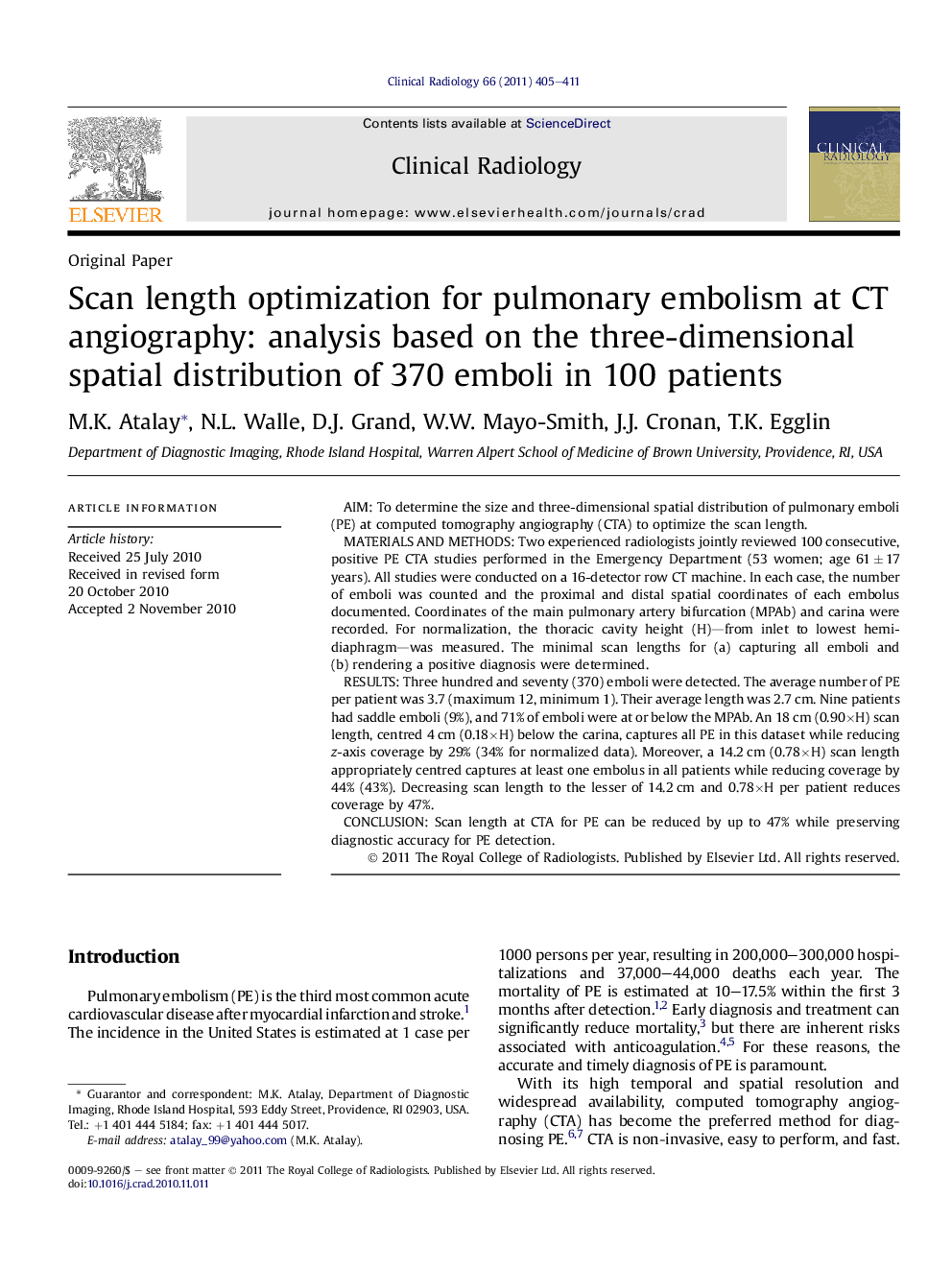| Article ID | Journal | Published Year | Pages | File Type |
|---|---|---|---|---|
| 3982070 | Clinical Radiology | 2011 | 7 Pages |
AimTo determine the size and three-dimensional spatial distribution of pulmonary emboli (PE) at computed tomography angiography (CTA) to optimize the scan length.Materials and methodsTwo experienced radiologists jointly reviewed 100 consecutive, positive PE CTA studies performed in the Emergency Department (53 women; age 61 ± 17 years). All studies were conducted on a 16-detector row CT machine. In each case, the number of emboli was counted and the proximal and distal spatial coordinates of each embolus documented. Coordinates of the main pulmonary artery bifurcation (MPAb) and carina were recorded. For normalization, the thoracic cavity height (H)—from inlet to lowest hemidiaphragm—was measured. The minimal scan lengths for (a) capturing all emboli and (b) rendering a positive diagnosis were determined.ResultsThree hundred and seventy (370) emboli were detected. The average number of PE per patient was 3.7 (maximum 12, minimum 1). Their average length was 2.7 cm. Nine patients had saddle emboli (9%), and 71% of emboli were at or below the MPAb. An 18 cm (0.90×H) scan length, centred 4 cm (0.18×H) below the carina, captures all PE in this dataset while reducing z-axis coverage by 29% (34% for normalized data). Moreover, a 14.2 cm (0.78×H) scan length appropriately centred captures at least one embolus in all patients while reducing coverage by 44% (43%). Decreasing scan length to the lesser of 14.2 cm and 0.78×H per patient reduces coverage by 47%.ConclusionScan length at CTA for PE can be reduced by up to 47% while preserving diagnostic accuracy for PE detection.
